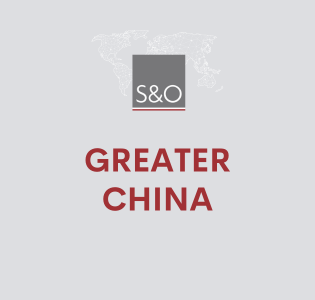BAD FAITH IN VIETNAM’S IP LEGAL FRAMEWORK
14 Oct 2024
Vietnam
share
In Vietnam, it has been a year since the concept of “bad faith” was officially introduced to the Vietnamese intellectual property (IP) legal framework, recognizing a significant advancement in protecting owners' IP rights. In particular, the IP Law - supplemented and amended in 2022, has officially introduced and regulated this legal term which filled the gaps in the principle of protecting IP owners’ rights.
1. General introduction on bad faith
Although the IP Law does not explicitly define "bad faith", it can be interpreted as encompassing acts of dishonesty, deception with an intention to mislead another, or unfair competition that infringes the rights of others. While the concept of “bad faith” can be applied to various aspects of IP law, it is primarily defined within the scope of trademark. Many countries have established bad faith as a legal ground for initiating actions against conflicting trademarks that are deemed to have been filed in bad faith, such as filing an opposition, or filing a cancellation.
Bad faith was not initially recognized by Vietnamese laws as an assessment criterion or a legal ground to oppose against a pending application, although under the IP Law 2005 of Vietnam, there was a ground to invalidate a registered mark if the registration was granted as a result of the “dishonesty” of the applicant. However, there were no clarification or regulation stipulating such “dishonesty” action under the IP Law 2005. Under the new amended IP Law 2022, the official introduction of “bad faith” concept has addressed the need to curb abusive registration practices in Vietnam.
2. Specific adaptation in Vietnam IP Law
The Vietnam IP law amended in 2022, which came into force on January 1, 2023, is therefore a particularly important step forward whereby bad faith is introduced, and it is the Circular No. 23/2023/TT-BKHCN issued November 30, 2023, that defines the criteria for identifying bad faith. By adding this notion, the Vietnam IP law provides trademark owners with an important additional legal basis. Indeed, introduced in Articles 96.1(a), 117.1(b)(c) and 130.1(d), bad faith is stipulated as one of the grounds for:
(i) Article 117.1(b), 117.3(c): Denying granting a registration certificate for a trademark, if evidently, there are grounds to assert that the applicant files the trademark application in bad faith. In addition, in case of receipt of a copy of Notice of Acceptance of a petition regarding a trademark filed in bad faith, the IP Office shall temporarily suspend the application examination process and continue the examination based on the dispute’s resolution;
(ii) Article 96.1(a): Entire invalidation of a trademark registration certificate if, the applicant files the trademark application in bad faith;
(iii) Article 130.1(d): Considering an unfair competition if, a possession or use of a domain name is conducted with bad faith.
In this regards, the above legal grounds (i) and (ii) can be directly invoked during an opposition or cancellation procedure against a conflicting trademark application/registration. Meanwhile, specific guidelines for determining bad faith in the context of legal ground (iii) have yet to be established.
3. Further determination of bad faith in Vietnam legal regulations
Article 34 of the Circular No. 23/2023/TT-BKHCN further clarifies the elements determining that an applicant has acted in bad faith. It has two conditions:
(i) There are grounds to determine that at the time of filing, the applicant “knows” or “has reason to know” that the mark subject to the registration/filing is identical or similar to another mark widely used in Vietnam, or a well-known mark used in another country, for identical/similar goods and services; and
(ii) The registration/filing of such trademark is aimed at:
+ Taking advantage of the reputation and prestige of the aforementioned mark for profiteering, or
+ Reselling, licensing, transferring the registration rights to owners of the marks prescribed above, or
+ Preventing its entry into the market to limit the competitiveness, or
+ Carrying out other acts against fair commercial practices.
While the provision has created a legal avenue for challenging bad-faith trademark applications, proving such bad faith remains challenging. The vague reference to "other acts against fair commercial practices" offers a room for flexibility in providing evidence, yet still requires expert analysis and reference to international practices. As the examination process continues to evolve, the interpretation and application of this provision will likely adapt as well.





